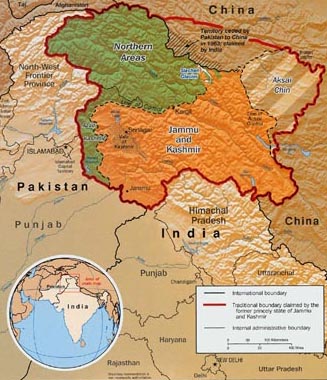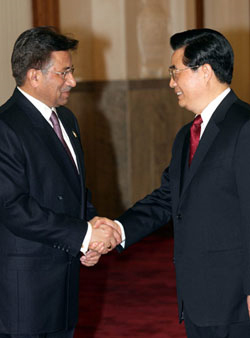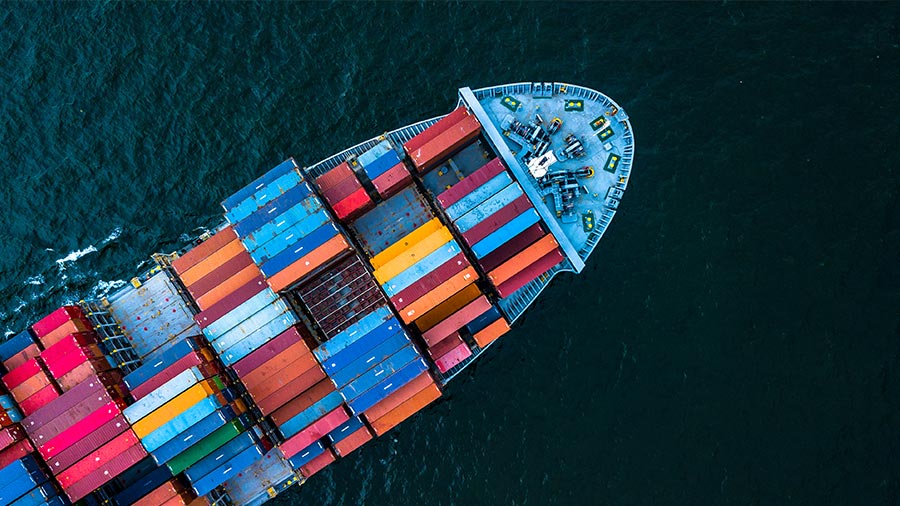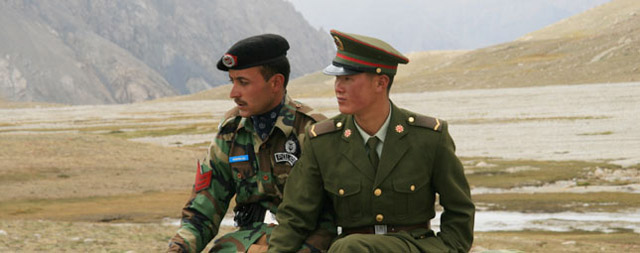China and Pakistan’s Enduring Alliance
This is the thirteenth in a series of articles that looks at China’s borders. As China has grown in the last 30 years, so have the often complicated relationships it has with its many varied neighbors. In this article, we take a look at Pakistan.
By Joyce Roque
Sept. 12 – On August 14, 1947, the state of Pakistan was born. Like all births, it would prove to be painful, messy and jarring affair. The subcontinent was effectively ripped at the seams into a Muslim East Pakistan and a Hindu West Bengal after 89 years under the British Raj.
National assets like the British Indian Army, the Indian Civil Service, railways, central treasury and other administrative services had to be divided accordingly. The divorce proved chaotic. It is one thing to divide a nation on paper but another thing to fracture lives. People suddenly found themselves living at the wrong side of the partition.
Muslims, Sikhs and Hindus were forced to move out leading to riots that killed an estimated half a million people and rendered millions homeless. During the process, the regions of Jammu and Kashmir remained undecided on which side to join. The issue still remains contested today and would be one of currents running deep in the India and Pakistan rivalry.
 Pakistan has laid claims on Jammu and Kashmir because majority of their population is Muslim while India maintains the claim over the regions based on an October 1947 instrument of accession that says the Maharaja agreed to join India.
Pakistan has laid claims on Jammu and Kashmir because majority of their population is Muslim while India maintains the claim over the regions based on an October 1947 instrument of accession that says the Maharaja agreed to join India.
The Kashmir issue would lead India and Pakistan to fight wars in 1947 and 1965. In 1971, another war erupted when India supported the Bengalis which led East Pakistan to become present day Bangladesh. Violence would again come in 1989, when an armed Islamic resistance emerged against Indian rule in the Kashmir valley with some wanting independence while others calling for accession with Pakistan.
Pakistan is located in Southern Asia and borders the Arabian Sea. It is a country entangled with India to its east, Iran and Afghanistan to its west and China to its north. Pakistan is a little less than the size of California with a total area of 803,940 square kilometers and a population of 172,800,048.
The name Pakistan was an idea suggested by a student named Chaudhuri Rahmat Ali in 1933. It stands for: P for Punjab, A for the Afghanis, K for Kashmir, S for Sind and Tan from Baluchistan. They represented the five Muslim Northern Units under the British Raj. In the Urdu language, the word Pakistan also means land of the pure.
The country was once the site of the famous Indus Valley civilization dating back as far 5,000 years ago. In the centuries following that, the nation would be exposed to a mish-mash of cultures: the Vedic, Persian, Indo-Greek and Islamic.
In the 16th to 17th centuries, the nation would be under the rule of the Islamic Mughal empire. Today, Pakistan is home to the second largest Muslim population in the world after Indonesia.
Bitter rivals
In the 61 years after the partition, stability for Pakistan is an elusive dream. The country stands on unstable ground in both its internal and international affairs.
It attempted to defuse tensions with India in 1997 but talks only led to a stalemate. Driven by the fear of war, India and Pakistan aggressively worked to stock its nuclear arsenal during the 1990s. This resulted in sanctions from both the U.N. and the rest of the international community.
In May 1999, India fired air strikes against Pakistani-supported militants found in the Indian-administered area of Kashmir. The fighting would displace an estimated 50,000 people from their homes. In the same year, General Musharraf would head a military coup in the country that overthrew Prime Minister Nawaz Sharif.
India and Pakistan tensions would regularly reignite through the years. In 1998, Pakistan and India would court nuclear confrontation. India detonated underground nuclear tests in Rajasthan near the border with Pakistan and Pakistan counter by conducting six tests in Baluchistan.
Currently, Pakistan’s economy is in tatters and the Taliban insurgency from neighboring Afghanistan has only worsened. Its politics is no better; the story of a nation mired in a litany of violence, corruption and scandal.
The latest of which was the death of Benazir Bhutto last Dec. 27, 2007. She was the popular opposition leader and had previously served as the country’s premier twice from 1988-1990 and 1993-1996. Shortly after returning from exile, Ms. Bhutto was killed in a political rally when an assassin would shoot her and blow himself up after.
This would lead to the resignation of Mr. Musharraf on August 2008. On September 2008, Pakistan People’s Party leader and Benazir Bhutto’s widower, Asif Ali Zardari, was elected as Pakistan’s new president.
Constant bedfellows
 During all this turmoil, China would remain Pakistan’s constant ally by supplying military arms, jets and nuclear weapons. As cliché as it sounds, it has been an enduring friendship based on strategic and geographic interests.
During all this turmoil, China would remain Pakistan’s constant ally by supplying military arms, jets and nuclear weapons. As cliché as it sounds, it has been an enduring friendship based on strategic and geographic interests.
China’s support of Pakistan is an indirect way of containing India. “Traditionally, the driving factor for China was a hedge against India, and for Pakistan it was gaining access to civilian and military resources,” Kenneth Lieberthal, a China expert and professor at the University of Michigan told the Council of Foreign Relations.
Given how much oil is the reason behind world affairs nowadays and China’s aggressive pursuit of it, one has to ask: do the same motivations apply for its relationship with Pakistan as well. China is building the Gwadar Port in Pakistan located in the mouth of the Straits of Hormuz in a move that will give it access to the Indian Ocean and unlock its western regions.
China’s access to the area will secure its oil supplies shipped from the Persian Gulf in anticipation of ballooning gas needs in the next decade. According to the article, China’s Energy Quest and the Indian Ocean, eighty percent of China-bound oil and liquid natural gas passes through the Indian Ocean.
China will be able to access Iranian oil through Pakistan via a pipeline running the Karakoram Highway. The highway begins at China’s Xinjiang running through the northern areas of Pakistan. The pipeline should serve as a complement China’s oil deals with Russia and Myanmar.
This is where China bumps into India. India also has escalating energy needs as its economy develops and it will be scrambling against China for control over the same oil resources in the region. For India, a shorter route for oil also includes access to Myanmar’s resources.
Furthermore, India has military presence in the Andaman and Nicobar Islands in the Bay of Bengal found opposite the Malacca Straits. This position gives India the opportunity to compromise Chinese energy imports if the need arose. The inverse is also true. China’s relationships with Pakistan and Myanmar have allowed it to invest in military presence within India’s backyard.
From 2003 to 2007, Pakistan trade with China reported a total deficit of US$7.5 billion. In the period from 2006 to 2007, Pakistan exports to China reached US$575 million while imports from China amounted to US$3.5 billion. By 2011, bilateral trade is expected to reach US$15 billion.
In 2001, the United States would become a major player in the region after the Sept. 11 attacks. It would forge an alliance with Pakistan based on security interests and its shared 2,430 kilometers border with Afghanistan.
As the British statesman, Lord Palmerston famously said, “Nations don’t have permanent friends, only permanent interests.” But maybe China is the nearest thing to a permanent friend that Pakistan can hope for. The China-Pakistan relations only sees itself strengthening further in the future even surpassing U.S.-Pakistan relations. China serves as a stabilizing force in a volatile region. It cannot afford to see a collapse of Central Asia and risk the spread of militancy in western regions.
This is the thirteenth in a continuing series that focuses on China’s borders. The complete series to date can be found here.
For more commentary on the emerging nations of Asia, please visit out sister website, www.2point6billion.com.
- Previous Article Kashgar to Become Central Asian Trading Hub, Again
- Next Article Rivals and Partners: India and China Look Forward



























